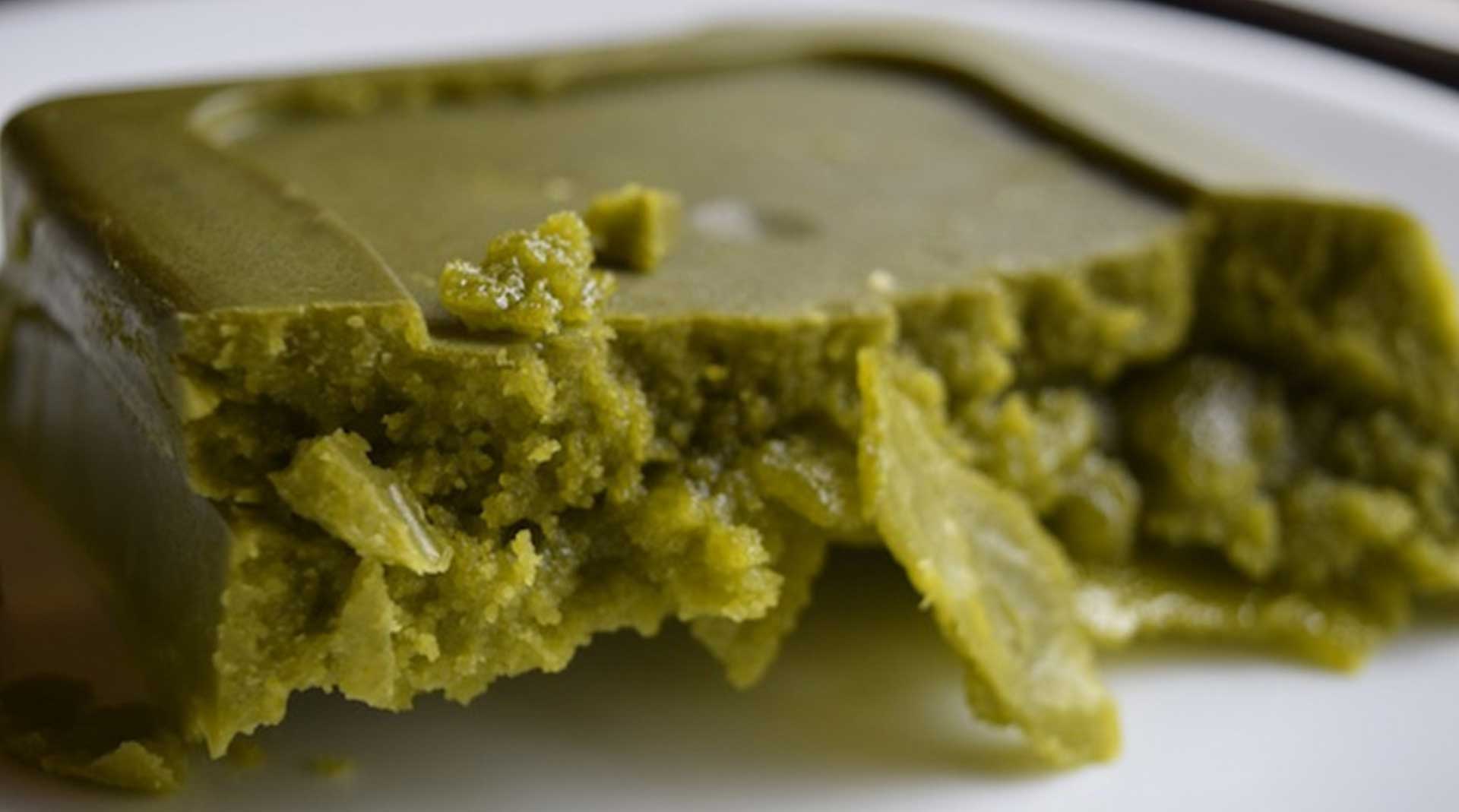Cannabis is an herb that has been used for natural treatment of diseases for thousands of years, and not just used for smoking. However, when considering it as a natural treatment, it is important to keep in mind that there are many different forms, and only some of them are safe enough to treat and relieve symptoms (even in children), while others can be used more recreationally.
How does cannabis work?
Leaves, flowers and buds are harvested to create products with recreational or medicinal properties. Cannabis can be smoked, applied to the skin, used in food and brewed in tea. People use this herb to relax or treat chronic pain. (8)
Cannabis consists of compounds called cannabinoids, where the primary compounds are THC and CBD. THC, also called Δ9-tetrahydrocannabinol, is psychoactive, while CBD, also called cannabidiol, is found in medical cannabis. (4) These compounds move from your stomach or lungs into the bloodstream, through which they reach the brain and act on specific brain receptors that release dopamine and make you feel relaxed. (1)
The main difference between the two compounds is how they bind to CB1 receptors in the brain. TCH can bind perfectly to the receptor, causing feelings of euphoria, but CBD does not bind as well and is less likely to activate the receptor. TCH therefore stimulates the receptors, but CBD suppresses the negative effects of THC. (7)
Research shows that strains that contain a high percentage of THC and a low percentage of CBD can be dangerous to your mental health, as THC can cause psychosis, paranoia and impair your cognitive abilities. (4) However, CBD inhibits the harmful effects of THC. In one study, participants received CBD or placebo orally, and after 3.5 hours, they received THC intravenously. The group receiving CBD was less likely to exhibit psychotic symptoms and poor memory than the placebo group.
All cannabis strains have more THC than CBD, but the levels of CBD do not have to be higher than the THC to block its effects. High THC strains usually have more than 20 percent of THC, while high CBD strains have more than 4 percent of CBD. Some THC-high strains include Girl Scout Cookies, Kosher Kush and Bruce Banner, (10) while some of the CBD strains are Charlotte’s Web, Harlequin and Sure Tsunami. (2) Cannabis products usually contain the THC and CBD volume on the package, so it is really important to make sure to get this information in order to get the right dose.
Research on CBD
Research shows that CBD has anti-inflammatory and antioxidant properties and it can protect the central nervous system. People use CBD to treat pain in HIV and multiple sclerosis patients, chronic pain, glaucoma, insomnia, anxiety and nausea after chemotherapy. CBD has also been used to treat seizures for centuries, but modern medicine is not entirely convinced of its effects on epilepsy due to lack of research. (3)
Despite insufficient research, it is worth noting the case of Charlotte Figi, a girl who started having constant seizures when she was 3 months old and was diagnosed with Dravet syndrome, which caused her to have up to 1,200 seizures per day. Month. Her seizures were significantly reduced when her parents decided to treat her with medical cannabis oil and today she is almost without seizures.
CBD has also been shown to relieve pain in cancer patients who receive insufficient relief from opiates. Self-medicated patients use nasal sprays containing only THC, a combination of THC and CBD and a placebo for two weeks. The TCH / CBD spray reduced their pain, insomnia and fatigue more than the other two syringes. (6)
Research also shows that although CBD cannot treat cancer, it has the potential to help with aggressive cancers. One study showed that Id-1, a protein that binds to DNA, regulates the metastasis of breast cancer cells. Through tests on cancer cells and mice, researchers found that CBD has the potential to regulate this protein and reduce the aggressiveness of breast cancer tumors. (9)
Recipe:
Cannabis only releases the effects when it is decarboxylated, which happens when it is heated. (5)
What you need:
- 28.35 g cannabis buds
- Baking paper
- Parchment paper
- Blender or food processor
Course of action:
- Preheat the oven to 115 ° C.
- Cover baking paper with parchment paper.
- Break the knobs into smaller pieces and line them on the back plate so that there is no space between the pieces.
- Bake for 30-40 minutes, turning knobs every 10 minutes.
- Remove from oven when buds are darker and dried.
- Allow them to cool completely and blend them coarsely.
When the buds are ready, the time has come to use them for the coconut oil recipe. Coconut oil is ideal for topical application because it is a carrier oil, which means that it carries the medicinal substances on the skin.
What you need:
- 1 g decarboxylated cannabis
- 28.35 g cold-pressed virgin coconut oil
- water
- glass jars
- saucepan
- fine-mesh sieve possibly covered with cheesecloth, or a bag of nut milk
Course of action:
- Mix the blended cannabis and oil in a glass jar and seal with a lid.
- Place water and jar in the saucepan and heat the water on low heat for an hour without boiling.
- Shake the oil in the jar to prevent it from thickening.
- Squeeze the pieces if they thicken to get all the oil.
- Store in an airtight glass container.
You can use the oil as it is, use it in cooking, or use it locally. You can also use the solid pieces in cooking, but do not use high heat to avoid damaging its active compounds.
Patients appear to respond well to 1 to 20 mg of cannabis oil. This dose was given daily to 74 children and adolescents for 3 to 6 months after their body weight for the treatment of epilepsy. The oil improved the frequency of seizures in most patients, and only 5 patients experienced side effects such as fatigue and gastrointestinal problems. (11)
The law varies, so before ordering or buying medical cannabis, be sure to check what rules apply.
IMPORTANT INFORMATION!
This information is not intended as a substitute for professional medical care, diagnosis or treatment and is for information only. Always seek the advice of your doctor or other qualified healthcare provider with questions about your medical condition and / or current medication. Avoid ignoring professional medical care or do not wait to get advice or treatment because of something you have read here. If you have pain, consult a doctor for a prescription for medical marijuana.
Sources:
(1) http://www.webmd.com/mental-health/addiction/recreational-marijuana-faq#1
(2) https://www.leafly.ca/news/cannabis-101/whats-the-deal-with-these-high-cbd-strains
(3) http://onlinelibrary.wiley.com/doi/10.1111/epi.12631/full
(4) http://journals.sagepub.com/doi/abs/10.1177/0269881112460109#articleCitationDownloadContainer
(5) http://www.healthy-food-house.com/cannabis-coconut-oil-easy-recipe-combats-pain-nausea-seizures/
(6) http://www.sciencedirect.com/science/article/pii/S0885392412004393
(8) http://www.webmd.com/mental-health/addiction/tc/marijuana-topic-overview#1
(9) http://mct.aacrjournals.org/content/6/11/2921.short
(10) https://www.leafly.com/news/strains-products/what-are-the-strongest-cannabis-strains
(11) http://www.sciencedirect.com/science/article/pii/S1059131116000054


